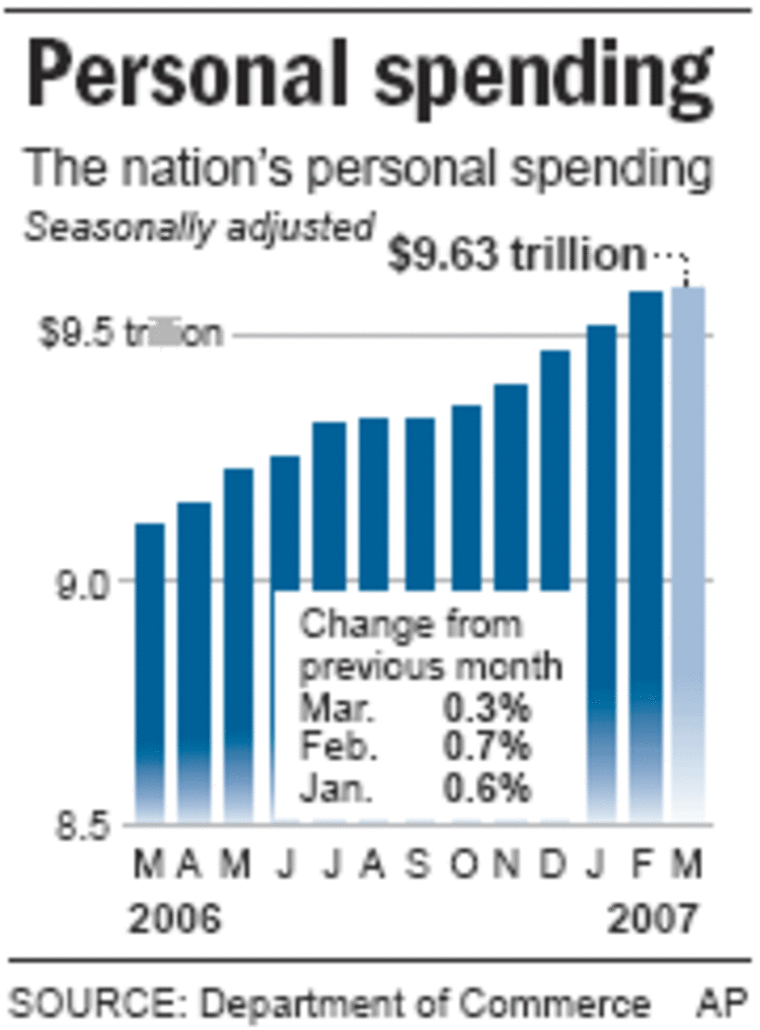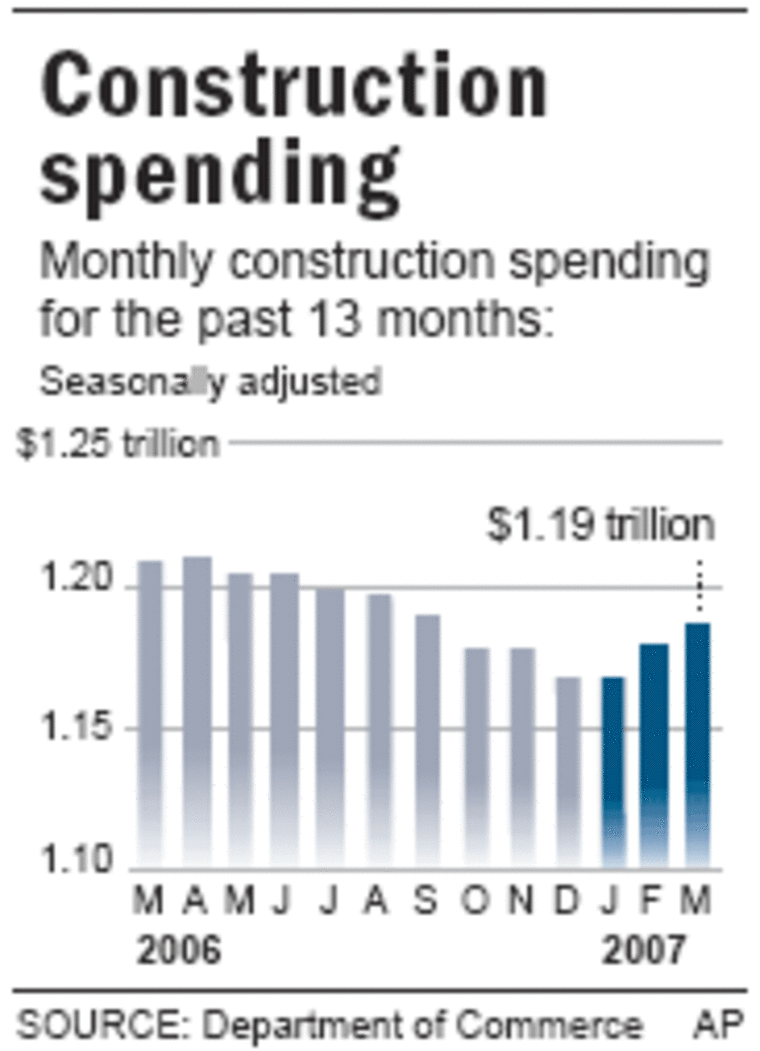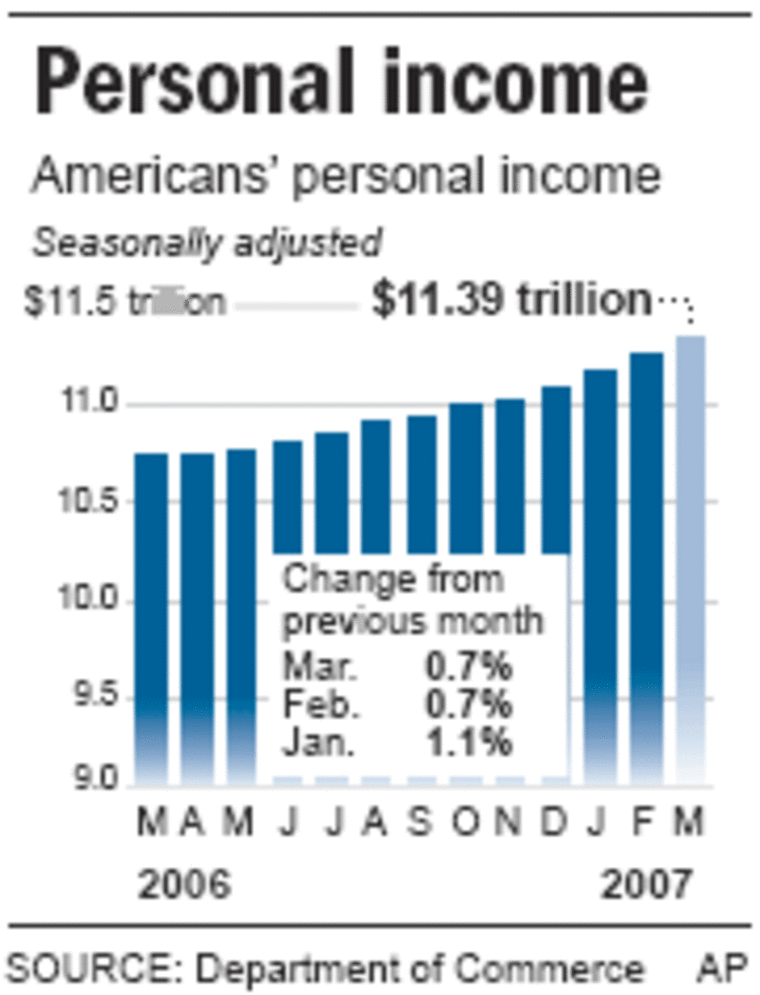Consumer spending rose at the weakest pace in five months in March as a surge in gasoline prices left shoppers with little left over for other items.
The Commerce Department reported Monday that consumer spending on all items was up 0.3 percent last month, the slowest increase since a similar rise in October. That lackluster gain came even though personal incomes rose by a healthy 0.7 percent last month.
The spending performance in March was even weaker when the effects of higher gasoline prices were removed. After adjusting for price increases, consumer spending actually fell by 0.2 percent in March, the poorest showing since September 2005 when the economy was suffering the aftershocks of Hurricane Katrina.
“People spent more in March but may be enjoying it less as the rising price of energy is cutting into what they actually take home,” said Joel Naroff, chief economist at Naroff Economic Advisors, a private consulting firm.
On Wall Street, the Dow Jones industrial average fell 58.03 points to close at 13,062.91. But even with the loss on the final trading day of the month, the Dow still posted a 5.7 percent gain for all of April, its best peformance since April 2003, as investors put aside worries about weak economic growth to focus instead on strong corporate earnings reports.

The weaker-than-expected consumer spending report on Monday added to worries that the economy could be in danger of stalling out if consumer confidence falters further in the face of rising gasoline prices and a slumping housing market.
“Unless spending posts unusually large gains in May, the second-quarter consumption number is practically guaranteed to be awful,” said Stephen Stanley, chief economist at RBS Greenwich Capital. He predicted that consumer spending will rise at an annual rate of around 1 percent, far below the 3.8 percent rate of spending growth in the January-March quarter.
Stanley said such a sluggish growth rate for consumer spending, which accounts for two-thirds of total economic activity, will translate into overall economic growth as measured by the gross domestic product of slightly above 2 percent in the current April-June quarter.

The government reported last week that the GDP expanded at an anemic 1.3 percent annual rate in the January-March quarter, the weakest showing in four years, raising new worries about the durability of the current five-year-old economic expansion.
A second report Monday showed that construction spending edged up a slight 0.2 percent in March. Spending on housing fell for an 11th month out of the past 12, but this was offset somewhat by increases in spending on hotels and other nonresidential projects and on government construction. In addition, construction activity in February was revised up significantly to growth of 1.5 percent, five times the initial estimate of 0.3 percent growth.
Analysts said this big increase will contribute to an upward revision in the GDP for the first quarter to around 1.5 percent or 1.6 percent.
In another sign of the slowdown in housing, the National Association of Realtors reported Monday that purchases of second homes for investment purposes fell by a sharp 28.9 percent last year to an annual rate of 1.65 million units while sales of vacation homes managed a 4.7 percent increase to a record 1.07 million units.
Sales of vacation properties and investment homes accounted for 36 percent of all existing and new home sales last year, down from 40 percent in 2005, which was the peak of the five-year housing boom, the Realtors reported.

A price gauge tied to consumer spending was unchanged in March, after excluding the effects of gasoline and food. This meant that core inflation as measured by personal consumption spending is up by just 2.1 percent for the past 12 months, much better than the worrisome 2.4 percent jump recorded for the 12 months ending in February.
The slowdown in inflation outside of energy should provide some assurance to the Federal Reserve, which is hoping that it has already done enough to slow the economy and restrain inflation. The Fed is widely expected to keep interest rates unchanged when the central bank meets next week.